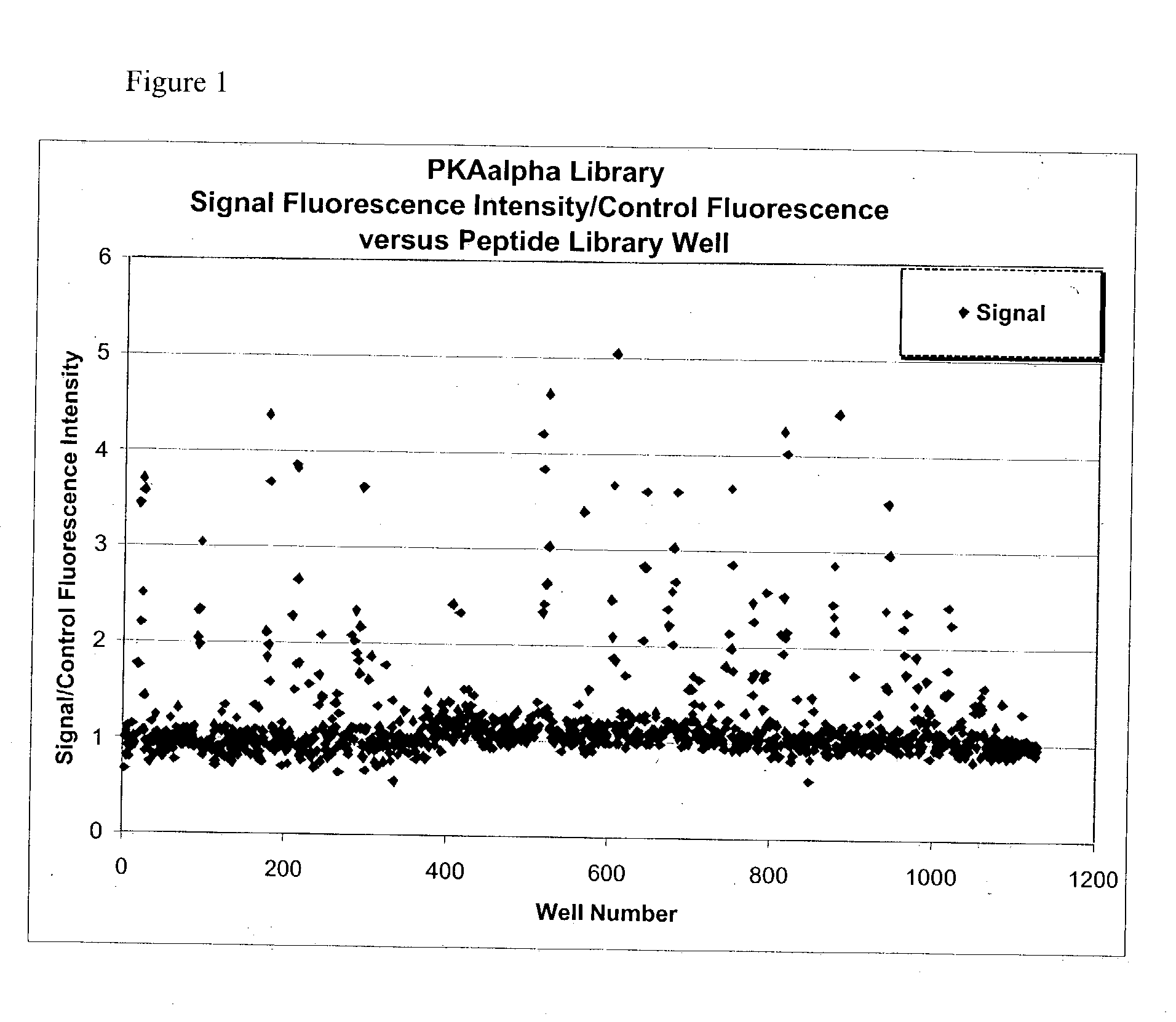Peptide substrate libraries
a technology of peptide substrates and libraries, applied in the field of peptide substrate libraries, can solve the problems of large amount of work required for identification and sequencing of proteins, high cost and time consumption, and the inability to find an optimal substrate sequen
- Summary
- Abstract
- Description
- Claims
- Application Information
AI Technical Summary
Benefits of technology
Problems solved by technology
Method used
Image
Examples
example 1
[0085] As described above, an algorithm may be employed to generate the kinase peptide libraries of the present invention using the constraint (#B)-(#Z)=+1. To limit the number of members in the library, the algorithm employed may contain additional constraints to further reduce the number of peptides in the library. For instance, the number of peptides that are possible for a +1 library after applying the following constraints--(# R)-(# E)=+1, # R<3, # L<3, and # P<2--reduces the library size from 15,625 (or 5.sup.6 members as discussed above) to 1,566. See Table 5 below for an exemplary library of peptides generated using such an algorithm, using the amino acids arginine (R), glutamic acid (E), alanine (A), leucine (L), and proline (P), with a serine residue fixed in the center position. Note that in this library, "J" denotes a fluorophore-modified amino acid rather than a spacing amino acid. The glycine residue at the termini of the peptide sequences facilitates solid-phase synth...
example 2
Peptide Library PKA Substrate Screen Protocol Peptide Library Design
[0087] The library that was used in the PKA screen was a "binary motif library" of the following form: Lissamine-[Deg]2-X-X-X-X-X-S-X-G, where X is one of the following residues: A=alanine, P=proline, S=serine or a mixture of two residues in equal proportion and similar charge:
+1 charge residue: B=K (lysine)+R (arginine)
-1 charge residue: Z=D (aspartic acid)+E (glutamic acid)
neutral hydrophobic: U=L (leucine)+V (valine)
[0088] In the final library, there were up to 32 peptides / well. There were also limitations on the composition such as only one P allowed and net (+1) peptide charge required. In addition, the number of hydrophobic residues permitted in each peptide was no greater than 2 for solubility purposes (U.ltoreq.2). The total library consisted of 1128 wells.
[0089] Assay Methods
[0090] The assay developed for the PKA substrate screen was performed as follows. The enzyme in the reaction buffer (0.017 U / .mu.l Bio...
PUM
| Property | Measurement | Unit |
|---|---|---|
| molecular weight | aaaaa | aaaaa |
| pH | aaaaa | aaaaa |
| pH | aaaaa | aaaaa |
Abstract
Description
Claims
Application Information
 Login to View More
Login to View More - R&D
- Intellectual Property
- Life Sciences
- Materials
- Tech Scout
- Unparalleled Data Quality
- Higher Quality Content
- 60% Fewer Hallucinations
Browse by: Latest US Patents, China's latest patents, Technical Efficacy Thesaurus, Application Domain, Technology Topic, Popular Technical Reports.
© 2025 PatSnap. All rights reserved.Legal|Privacy policy|Modern Slavery Act Transparency Statement|Sitemap|About US| Contact US: help@patsnap.com

